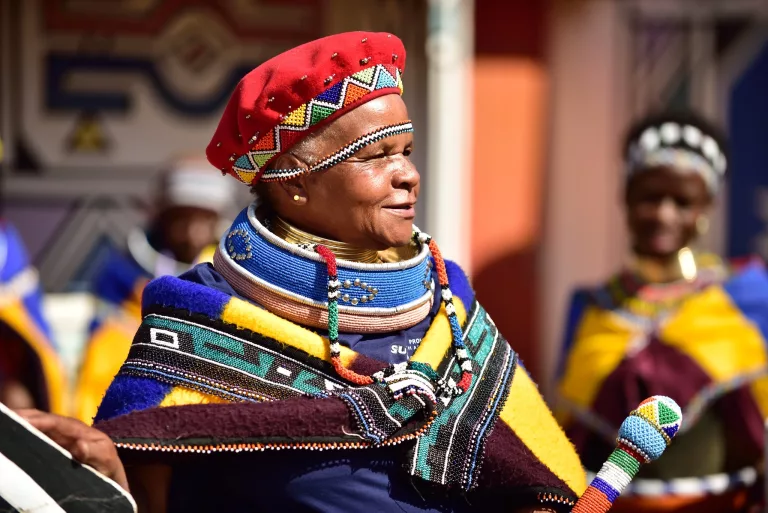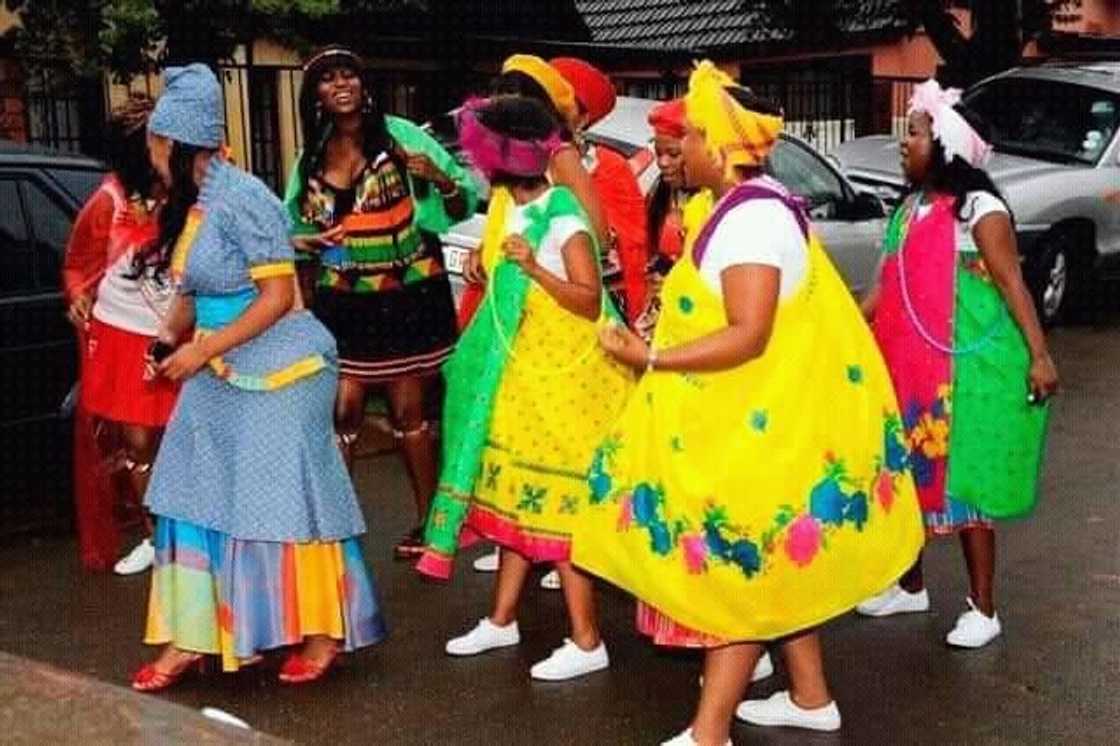The Ultimate Guide To South African Culture Today
The Ultimate Guide To South African Culture Today
Blog Article
The smart Trick of South African Culture Today That Nobody is Talking About
Table of ContentsGetting The South African Culture Today To WorkThe Greatest Guide To South African Culture TodaySouth African Culture Today Things To Know Before You Get ThisWhat Does South African Culture Today Do?The Facts About South African Culture Today UncoveredThe Best Guide To South African Culture Today
An issue of importance in Zambian villages is the passing away of liked ones. All members of the town placed cash, time and effort together for the interment of the deceased.Music and dance is a very essential element of the Zambian culture. The different tribal systems have their own dance forms; however, makishi is common amongst all people.
The Definitive Guide to South African Culture Today
When it concerns songs, drums are made use of the most, with a selection of drumming ceremonies. In Zambia, bulk of the people are Christian; Protestant and Roman Catholic. There are tiny teams of Muslims and Hindus, with the rest complying with local native tribal ideas.

South African heritage and culture is profoundly varied, and includes many different groups of people who each have their own traditions and beliefs. Having such a variety of individuals and societies is what makes South Africa so unique. In truth feeling of the expression, we are a rainbow nation.
South Africa has around 3 hundred thousand Portuguese individuals residing in it. Making it the 7th on the listing of countries with the most Portuguese people in it outside of Portugal. Portuguese is not just a society, but it is also a language and a nationality. Portuguese people stem from the nation of Portugal in Europe, nonetheless, because of Portugal (like lots of other countries in Europe) exploring the globe and overcoming various other countries during the 15th 20th centuries, South Africa has what we call Portuguese South African's living in it.
The Greatest Guide To South African Culture Today
Among the famous features of the topography is a plateau that covers virtually two thirds of the facility of the country. The plateau facility rises towards the southeast, where it culminates in the Drakensberg range, component of an escarpment that separates the plateau from the seaside areas. The Drakensburg includes Champagne Castle, the highest possible top in the nation.
The area north of the Witwatersrand, called the bushveld, slopes downward from eastern to west toward the Limpopo River, which develops the international border. The western area of the plateau, the middleveld, also descends in the direction of the west and varies in elevation in between the highveld and bushveld. In between the Drakensburg and the eastern and southern shoreline, the land comes down to the sea.
Nearer the coast there is a low-lying plain called the eastern lowveld. Southwest of the plateau the nation comes to be gradually a lot more dry, paving the way to the hostile desert of the Great Karroo, approached the east by the lower, much better sprinkled plateau of the Little Karroo. Dividing the dry southern interior from the sandy littoral of the southerly coast and West Cape is another variety, the Langeberg.
South African Culture Today for Dummies
The country's racially, ethnically, and politically separated background has actually generated nationwide and subnational signs that still work as signs of the country, and others symbols that are accepted just by particular teams. The monoliths to white settler conquest and political dominance, such as the Afrikaner Voortrekker ("leader") Monolith in Pretoria and the Rhodes Monolith honoring the British colonial empire builder and Cape head of state Cecil Rhodes, continue to be sectarian signs.
The initial modern-day citizens were the San ("bushman") hunter-gatherers and the Khoi ("Hottentot") individuals, who herded animals (South African culture today). The San might have existed for countless years and left evidence of their visibility in countless ancient cavern paints ("rock art"). Bantu-speaking clans that were the ancestors of the Nguni (today's amaZulu, amaXhosa, amaSwazi, and vaTsonga peoples) and Tswana-Sotho language teams (today's Batswana and Southern and Northern Basotho) migrated down from eastern Africa as early as the fifteenth century

The two former republics of the Orange Free State and Transvaal (South African Republic) were developed by Afrikaner settlers that beat and dispossessed the Basotho and Batswana. Lesotho would have been by force included right into the Orange Free State without the expansion of British protection in 1869. The utmost marriage of the country arised from the South African Battle (18991902) between the look at more info British and the two Afrikaner republics, which lowered the country to mess up at the start of the twentieth century.
Afrikaners historically considered themselves the just real South Africans and, while granting full citizenship to all homeowners of European descent, denied that status to people of shade till the autonomous transition of 1994. British South Africans keep a feeling of social and social link to Great Britain without compromising their identity as South Africans.
South African Culture Today Things To Know Before You Buy
The variety and fragmentation within ethnic collections and the equilibrium of tensions between see it here those groups during the twentieth century stopped interethnic civil problem. While intergroup tensions over resources, entitlements, and political supremacy continue to be, those disputes are as most likely to match Zulu against Zulu as Zulu against Xhosa or African versus Afrikaner.
From colonial India, British sellers and managers brought the rounded metal ornamental roofing systems and slender shoelace work pillars that still epitomize the terraces of cottages in communities and cities throughout the country. Holy places add a crucial architectural aspect also in the smallest communities. Along with the soaring steeples and classic stonework of Afrikaans Dutch Reformed churches, Anglican churches, synagogues, mosques, and Hindu temples offer variety to the spiritual architectural scene.

Butchering and the brewing of standard grain beer are vital in safeguarding the participation and a good reputation of the forefathers who are thought about the guardians of excellent lot of money, prosperity, and wellness. Indian areas preserve their indigenous culinary customs and apply them on Islamic and Hindu ritual and ceremonial events. Afrikaners and Coloured individuals gather at weekends and special celebrations at multifamily bbqs called braais, where community bonds are enhanced.
Since this was the key financial enterprise of both black Africans and white colonists, conflict between those groups fixated the property of grazing land and animals. In 1867, the biggest diamond deposits worldwide were discovered at Kimberley in the west central area. The wealth from those fields helped finance the exploitation of the biggest gold reef in the world, which was found on the Witwatersrand in 1886.
The Definitive Guide for South African Culture Today
This led to misunderstandings and deliberate misrepresentation in the ventures of white inhabitants and government officials with African principals Source throughout the colonial duration (South African culture today). In the facility of African books, some aspects of public and mainly "tribal count on" land tenure were maintained, and even in white rural locations, types of communal period were still practiced in locations with African neighborhoods
After the democratic makeover of 1994, programs for land restitution, redistribution, and reform were set up, however progress has actually been sluggish. The white minority still controls eighty percent of the land. Following agricultural land intrusions in Zimbabwe, the Department of Land Matters has actually pledged to speed up land redistribution.
Report this page